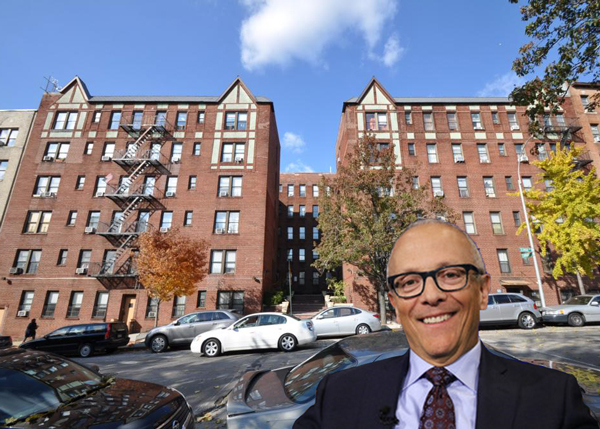Trending
No golden toilets at Bronstein apartments, 67 tenants allege in lawsuit
Renters say landlord made up the cost of individual apartment improvements, overcharged them in rent

Over 60 tenants in buildings owned by Bronstein Properties allege the purported costs of renovations made to their rent stabilized apartments are completely disconnected from reality. They say it translates to them being grossly overcharged on rent.
In a lawsuit filed Tuesday in Manhattan State Supreme Court, attorneys for the tenants cited dozens of apartments across 24 buildings where the landlord would have had to have performed tens of thousands of dollars in improvements to justify the rent increases, but for which they claim there is no evidence that such work was done.
The lawsuit was first reported by the New York Times.
Individual apartment improvements, or IAIs, are one of the most common ways that landlords boost rents on affordable, rent stabilized apartments. For a landlord, the deal is simple: he or she spends money renovating units and then charges a percentage of those costs in rent –in perpetuity. Those increases are often enough to pull the apartment out of the rent stabilization program all together, freeing up apartments for even more improvements and rent increases.
But Bronstein’s tenants point to the lack of Department of Buildings permits at many of the units in question, including one apartment that would have required $82,200 in improvements to justify the rent. The tenants further claim that there were not enough other additions made to apartments to justify the increases.
For example, at 30 Seaman Avenue, a rental building in Inwood, there are eight units with improvement costs that, based on the amount Bronstein increased the rent, would have ranged between $20,000 and $40,000, depending on the apartment. Construction permits have never been filed for those units, the plaintiffs allege, nor could they find any other changes that would justify the correlating costs.
In another example, at 43-32 47th Street in Sunnyside, one apartment’s rent spiked 141 percent between 2014 and 2015, an increase that would have required over $60,000 in IAIs. The suit alleges there’s no evidence improvements meriting such costs occurred either.
“It appears that Defendants’ scheme pervades the entire Bronstein Portfolio,” the complaint reads, “and that the most basic discovery will reveal Defendants’ widespread reliance on fraudulent, exaggerated and/or undocumented IAls.”
Barry Rudofksy, the principal of Bronstein, did not immediately return a request seeking comment. A 2016 analysis of property records by The Real Deal found that Bronstein was the city’s 14th largest for-profit rental landlord.
Although IAI costs must be reported to the state’s Homes and Community Renewal, the agency does not make sure every dollar in an improvement report is accounted for. HCR’s Tenant Protection Unit, however, can and has performed audits of previously approved rent increases derived from IAIs.
Apart from IAI issues, the plaintiffs allege that the landlord also failed to register some apartments as rent stabilized with HCR, including buildings that receive the J-51 tax abatement, which does not allow for unit deregulation.
The lawsuit came together as the result of a research effort by the tenant advocacy group Housing Right Initiative, which is behind a slew of rent-stabilization suits against prominent landlords like Stellar Management and A&E Real Estate.
Aaron Carr, the nonprofit group’s founder, quipped in a statement that Bronstein’s apartments all seem to be missing the luxury accessories that the steep rent increases would suggest. “Where is the butler? Where is the golden toilet seat? Where is the marble statue of an ancient Greek goddess? And, most importantly, where is our government?” Carr asked.
Clarification: This story was updated to clarify information about DHCR and its processing of IAIs.




